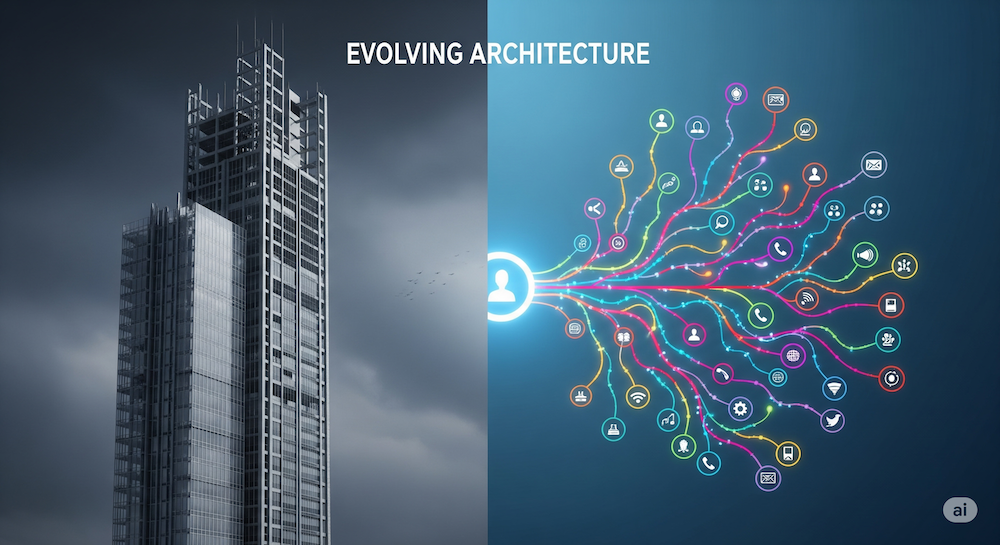
Fixing Software Development Itself - An Evolving Architecture
From Rigid Blueprints to Living Systems
25 June 2025
For decades, we’ve built software like we build skyscrapers: with a detailed architectural blueprint that tries to predict every need upfront. Even "agile" methods often operate within this "blueprint fallacy," adding features to a rigid foundation, which leads to our industry's most persistent headaches:
• Massive Upfront Risk: We invest heavily in designing a perfect structure based on assumptions that are often proven wrong the moment the software meets real users.
• Architecture Rigidity: The initial blueprint defines the system's limits. Adding a truly novel feature can require a costly, high-risk "renovation" of the entire foundation.
• Crushing Technical Debt: As new features are "bolted on," the core architecture groans under the weight, becoming complex, brittle, and expensive to maintain.
What if we could flip this model? Instead of engineering a static structure, what if we could deploy an evolving system?
This is the Evolving Architecture paradigm, enabled by the dEO (Dynamic Executable Ontology) engine. It’s a fundamental shift in how we build software.
Here’s how it works:
1. Deploy the Core Protocol: You don't start with a massive spec. You begin with the application's most fundamental "seed." For a CRM, this isn't a complex schema; it's a single core node: @Contact, defining the essential protocol for what a "contact" is. Your software is now live, but minimal and pure.
2. Detect Demand as Stimulus: A user tries an action that doesn't exist yet, like "log a call." In a traditional system, this is an error or a backlog ticket. In a dEO system, it’s a stimulus — a valuable signal that the system needs to expand its capabilities.
3. Extend the Architecture with Modules: The developer's role shifts from architect to extender. They don't re-architect the core; they simply extend the ontological graph. They can define a new @Call monad and link it to @Contact with a new action. The core remains untouched and stable. Because the architecture is the graph, adding functionality is simple and safe.
This process continues. Need to add companies? Link an @Company monad. The system's complexity becomes emergent — a rich network of interconnected, yet independent, capabilities. New features strengthen the ecosystem instead of making it fragile.
This is a fundamental shift in software creation, ideal for startups navigating the uncertainties of product-market fit and for enterprises seeking to escape the mire of technical debt. You build what's needed, as it's needed, allowing the software to evolve organically into the perfect solution for its environment.
#SoftwareArchitecture #Agile #Innovation #TechnicalDebt #Ontology #CognitoOne #dEO